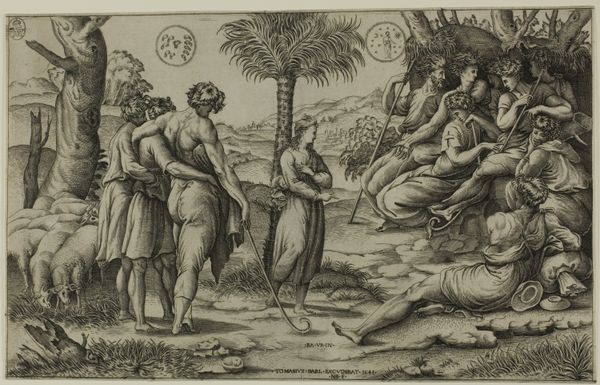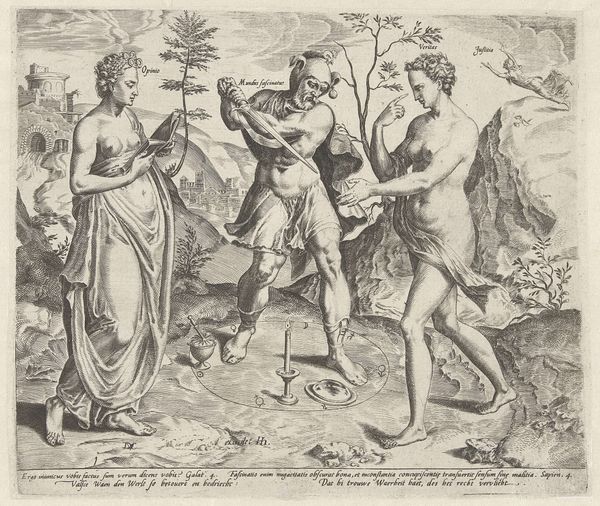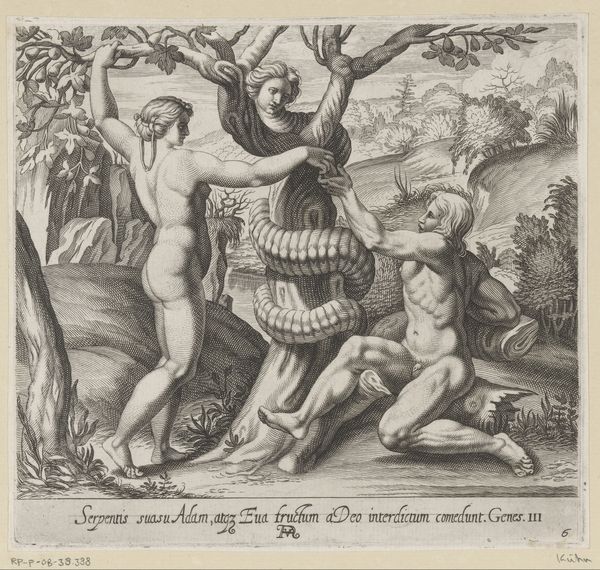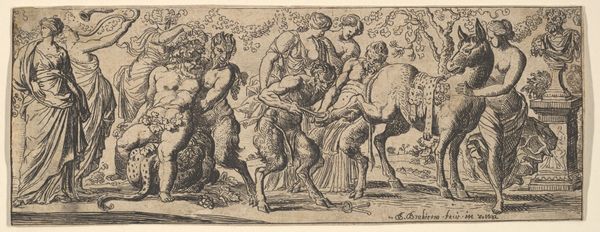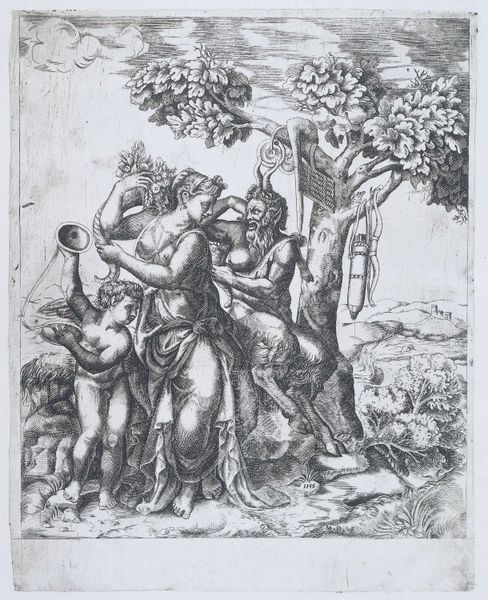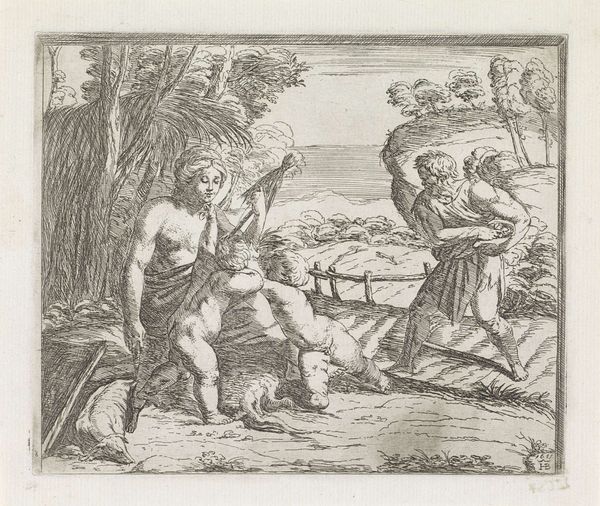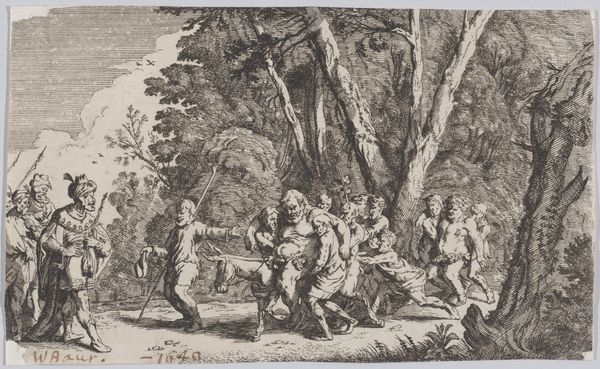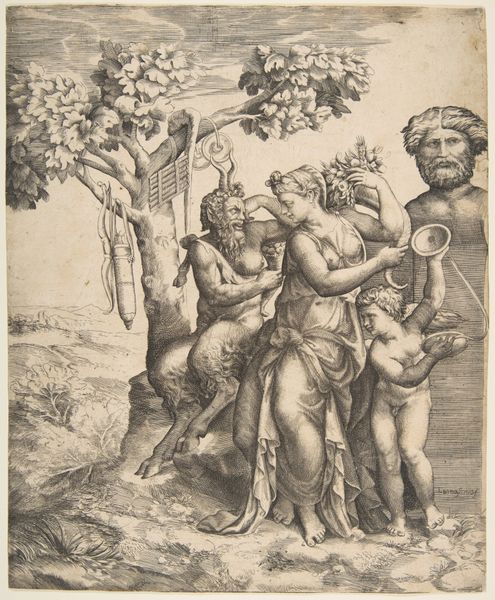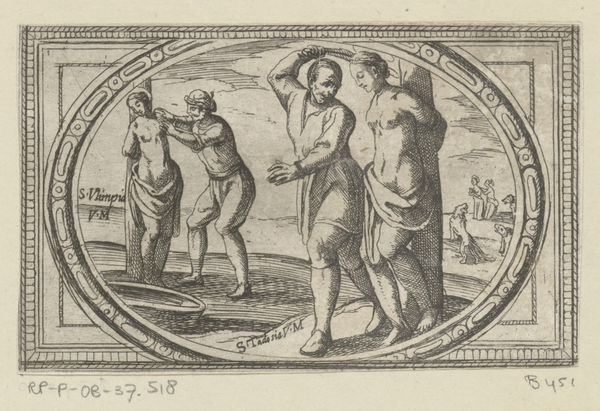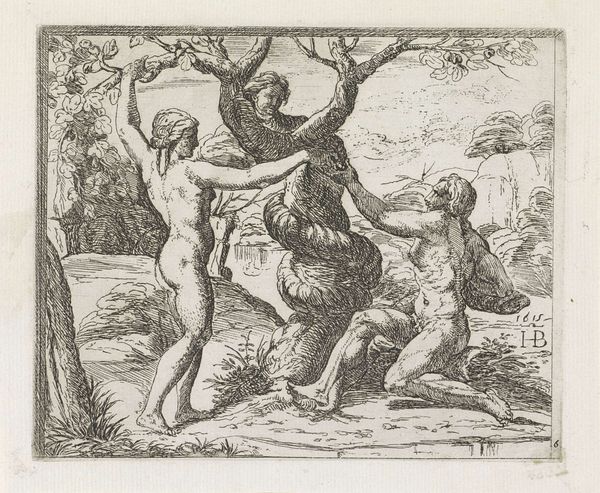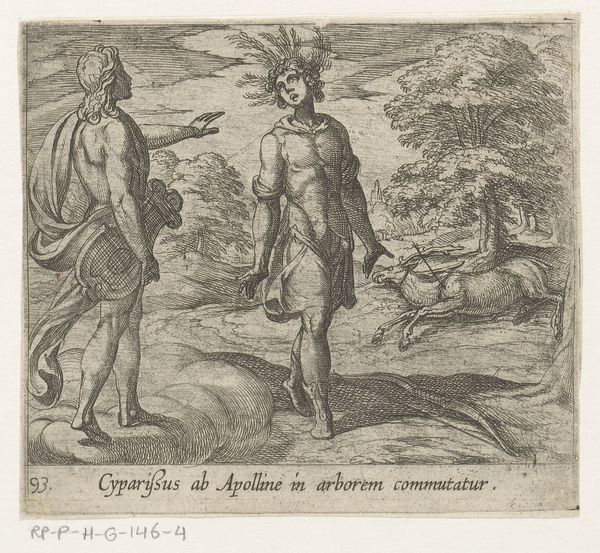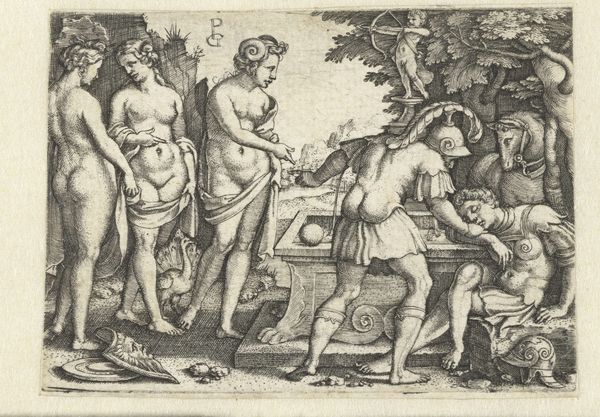
Adam and Eve Eating the Forbidden Fruit, from Old and New Testaments 1548
0:00
0:00
drawing, print, etching
#
drawing
#
allegory
# print
#
etching
#
landscape
#
history-painting
#
northern-renaissance
#
nude
Dimensions: Sheet: 4 5/8 × 5 7/8 in. (11.7 × 14.9 cm)
Copyright: Public Domain
Editor: Here we have Augustin Hirschvogel’s "Adam and Eve Eating the Forbidden Fruit" from 1548, currently housed in the Metropolitan Museum of Art. It’s an etching, surprisingly small. The scene feels strangely peaceful, despite the gravity of the subject. What strikes you when you look at it? Curator: I notice the complex interplay of religious narrative and the burgeoning interest in landscape. This was created during the Reformation, a time of great upheaval and re-evaluation of religious authority. The print medium itself democratized images, spreading ideas beyond the Church's control. Editor: Democratization through prints…that’s fascinating. But how does the landscape fit in? Curator: The landscape setting is not merely a backdrop. In Northern Renaissance art, landscapes often symbolized moral and spiritual states. Look at the relatively untamed wilderness surrounding Adam and Eve. Does that speak to you at all about humanity’s place within that time? Editor: It's wild but…domesticated at the same time? Like, there are deer, but also bunnies hopping around. It feels controlled, not truly Eden-like. Is Hirschvogel suggesting something about the artificiality of even the ‘natural’ world? Curator: Precisely. The ordered nature suggests a specific vision – one influenced by humanist thought that was emerging at the time. Also consider who commissioned such images and for what purposes they would be used. These kinds of images are complex visual arguments. Editor: So, this small print, seemingly straightforward, is actually entangled in religious reform, the rise of humanism, and the socio-political power of image distribution. Wow! I’ll never look at Adam and Eve the same way again. Curator: Indeed, art exists within systems and relationships of power, and through careful analysis, it allows us to access ways that past worlds functioned.
Comments
No comments
Be the first to comment and join the conversation on the ultimate creative platform.

